The first thing you notice when you cross the bridge into Wenatchee is the giant apple: a 16-foot-high apple-shaped billboard, welcoming all to the “Apple Capital of the World.” Wenatchee, a small city of around 30,000 people in central Washington State, sits at the confluence of two rivers—the Columbia and the Wenatchee. Surrounded by the high-desert foothills that edge the Cascade Range, the Wenatchee Valley is an ideal environment for orchards; the region produces the majority of the nation’s cherries and apples.
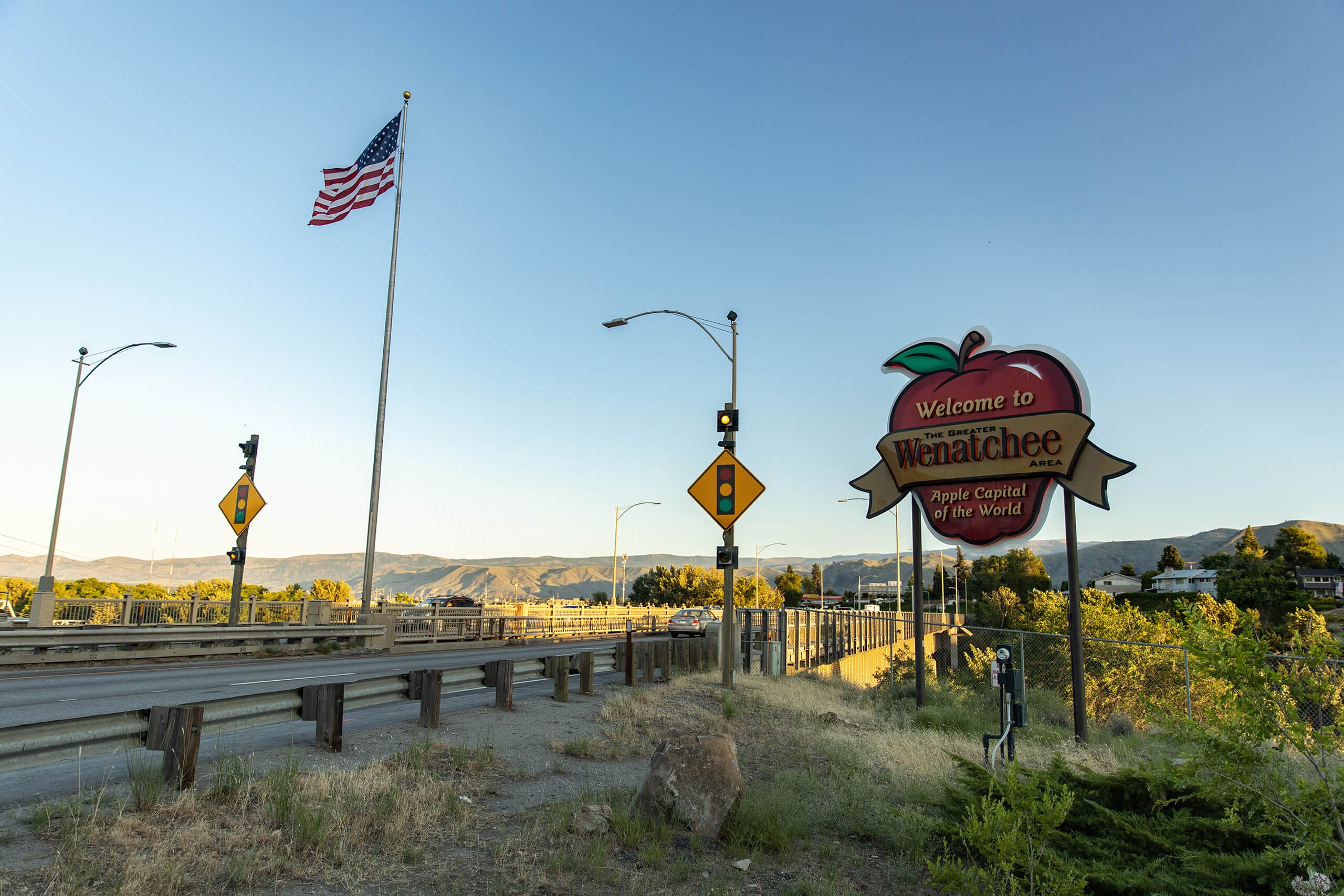
This is where 22-year-old Teresa Bendito grew up, in a home on the banks of the Columbia River. Like many of her neighbors, Bendito’s family has worked in farms and warehouses up and down the valley. During cherry harvest season—typically June through August—orchard workers regularly clock 12- and 15-hour days. But despite the long hours, Bendito says they always found time to ride bikes and play along the river after work, making the most of the midsummer sunlight.
Bendito was 10 years old when developers razed her neighborhood to make way for new luxury housing. Her mother had fought the changes for a year, securing promises of relocation support from the developer and city officials. But when the time came for her family to move, their promises fizzled. Her family turned to the local Catholic church, which helped them find a new home, miles away from their beloved riverfront green space. Their rent tripled. It was just another link in a chain of unfulfilled commitments made to the city’s Latino community, Bendito says. “We have a history of proposals like these falling through, for one reason or another.”
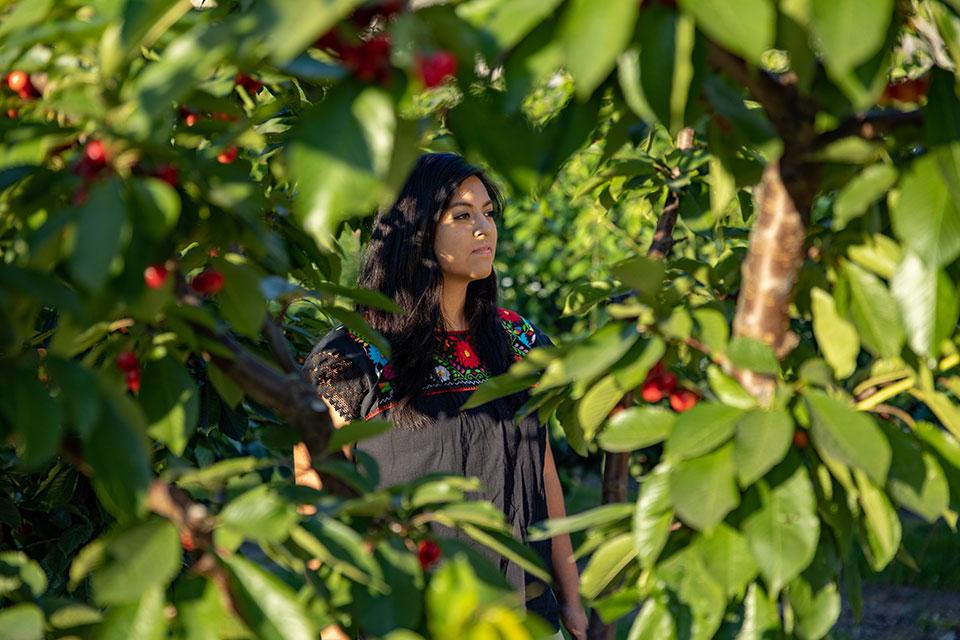
– Teresa Bendito, South Wenatchee resident
Bendito’s family eventually relocated to South Wenatchee, a neighborhood of 5,000 people. While rents here are more affordable than in neighborhoods along the river and the foothills, the disparities are much greater. Says Misael Fajardo-Perez, a local minister, most South Wenatchee families make their living through farm labor, and many struggle to make ends meet. “We have poverty and drug problems, high childhood obesity rates, and a lack of good infrastructure,” Fajardo-Perez says. “The needs in this community can often feel overwhelming.”
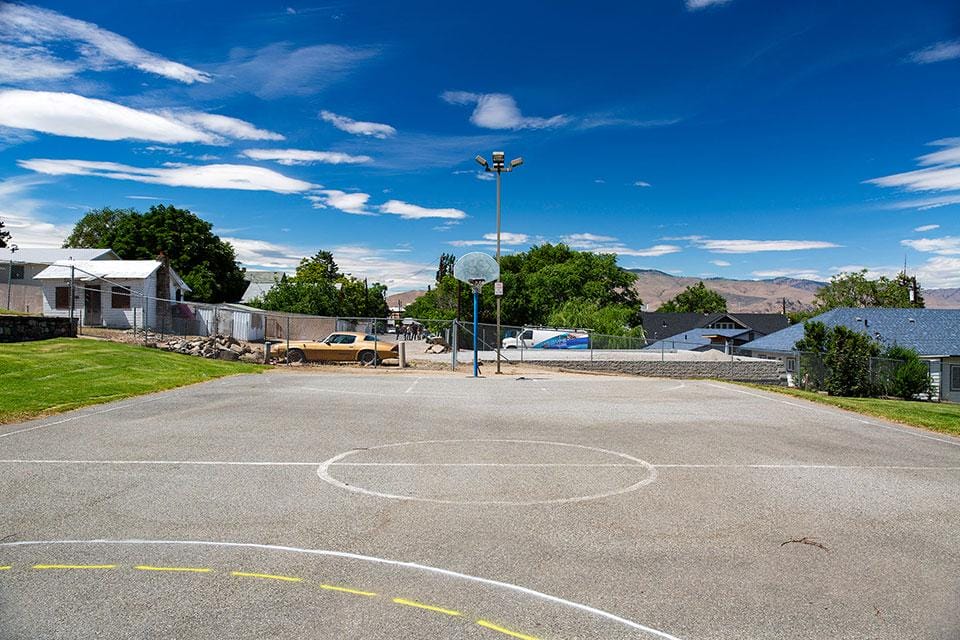
Those disparities are no more evident than at the neighborhood park down the road from Bendito’s home. Kiwanis Methow Park (pictured before renovation, above) is one of the only public green spaces in South Wenatchee, but for decades, it attracted the wrong kind of attention from city leaders. To discourage gang activity, the city cut down trees and installed a chain-link fence and towering industrial floodlights. For years, kids growing up nearby were warned away from spending time there. Neighbors say the gang activity has subsided, but the park’s reputation as an unsafe space lingers, especially among outsiders.
“This is an injustice, but it’s our reality,” says Bendito’s mother, Teresa Zepeda-Sosa. She wishes Kiwanis Methow Park looked as nice as the parks in the wealthier parts of town. There’s not much programing in Kiwanis Methow, and the park lacks basic facilities, like restrooms. Back in Mexico, Zepeda-Sosa says, she would walk around her old neighborhood park every Sunday with her family. Here she can’t visit Kiwanis Methow with her elderly mother, because there’s no wheelchair accessibility.
In 2016, Zepeda-Sosa encountered Cary Simmons at a local mariachi festival. “My mom was like, ‘What’s this white guy doing at a Mexican cultural event? We better see what he’s about,’” Bendito recalls.
“This is an injustice, but it’s our reality.”
– Teresa Bendito, South Wenachee resident
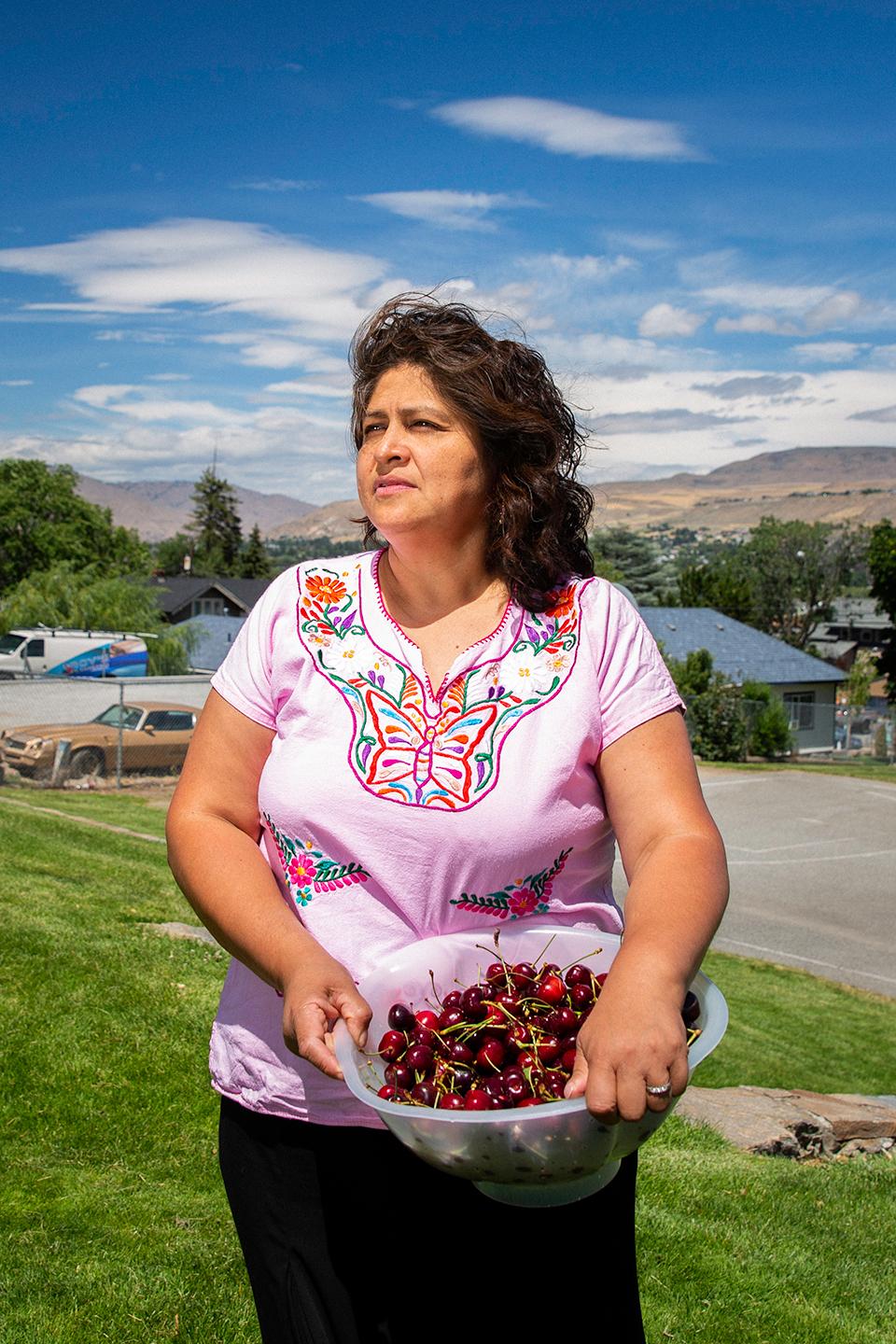 Zepeda-Sosa marched up to Simmons and introduced herself. She learned he worked as a project manager for Trust for Public Land, an organization with a long history of helping conserve trails and open lands around Wenatchee—improvements that have raised the city’s profile as an outdoor adventure destination. Now Simmons was in South Wenatchee because TPL knew this part of town needed a great park.
Zepeda-Sosa marched up to Simmons and introduced herself. She learned he worked as a project manager for Trust for Public Land, an organization with a long history of helping conserve trails and open lands around Wenatchee—improvements that have raised the city’s profile as an outdoor adventure destination. Now Simmons was in South Wenatchee because TPL knew this part of town needed a great park.
“Kiwanis Methow Park was a place with lots of potential, but it was in rough shape, and some neighbors didn’t feel safe there,” says Simmons. “I was at the festival to tell residents about Trust for Public Land’s effort to renovate the park, to seek their input and learn what they wanted the park to become, and to recruit volunteers to lead the redesign.”
After years of outsiders showing up and talking about making change, Bendito and Zepeda-Sosa say they’d learned to be skeptical. “We’ve had many past administrations and organizations making false promises,” says Bendito. But the chance to help lead and organize their community around an outcome as tangible as a new park was exciting. “Once we found that out, we wanted to help any way we could.”
Bendito and her mother were among the first South Wenatchee residents to sign up as volunteers to revitalize Kiwanis Methow. Three years later, their group is more than 120 members strong. They call themselves the Parque Padrinos, or godparents of the park.
“In our culture, everyone has lots of padrinos and madrinas. They’re people you choose to take care of you, watch over you, and support you,” Bendito explains. Padrinos and madrinas take responsibility for nurturing an extended family or community. At a big celebration, like a wedding or quinceañera, one padrino can be in charge of the cake, while another madrina can be in charge of the music. Says Bendito, “We’re doing that for this park.”
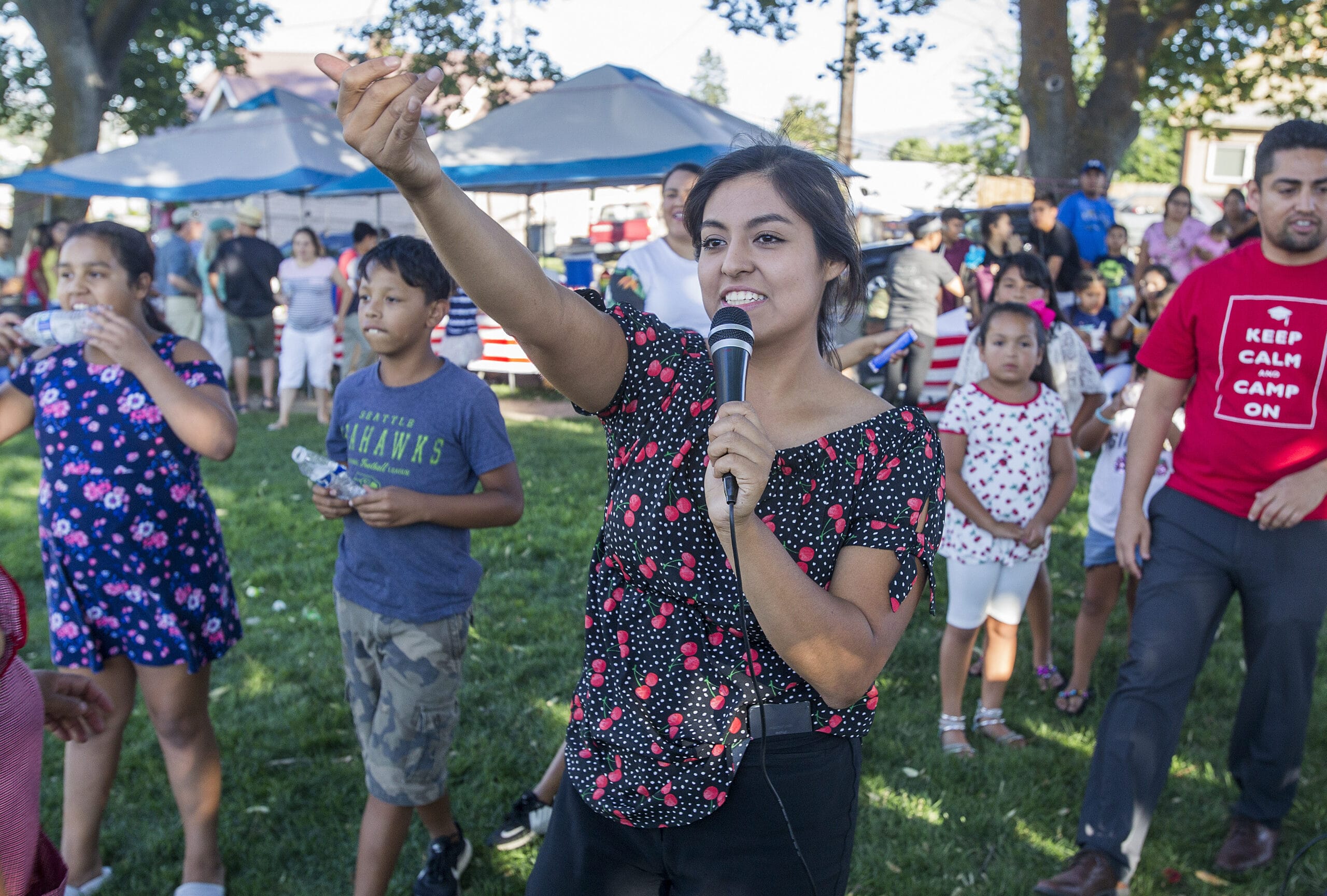

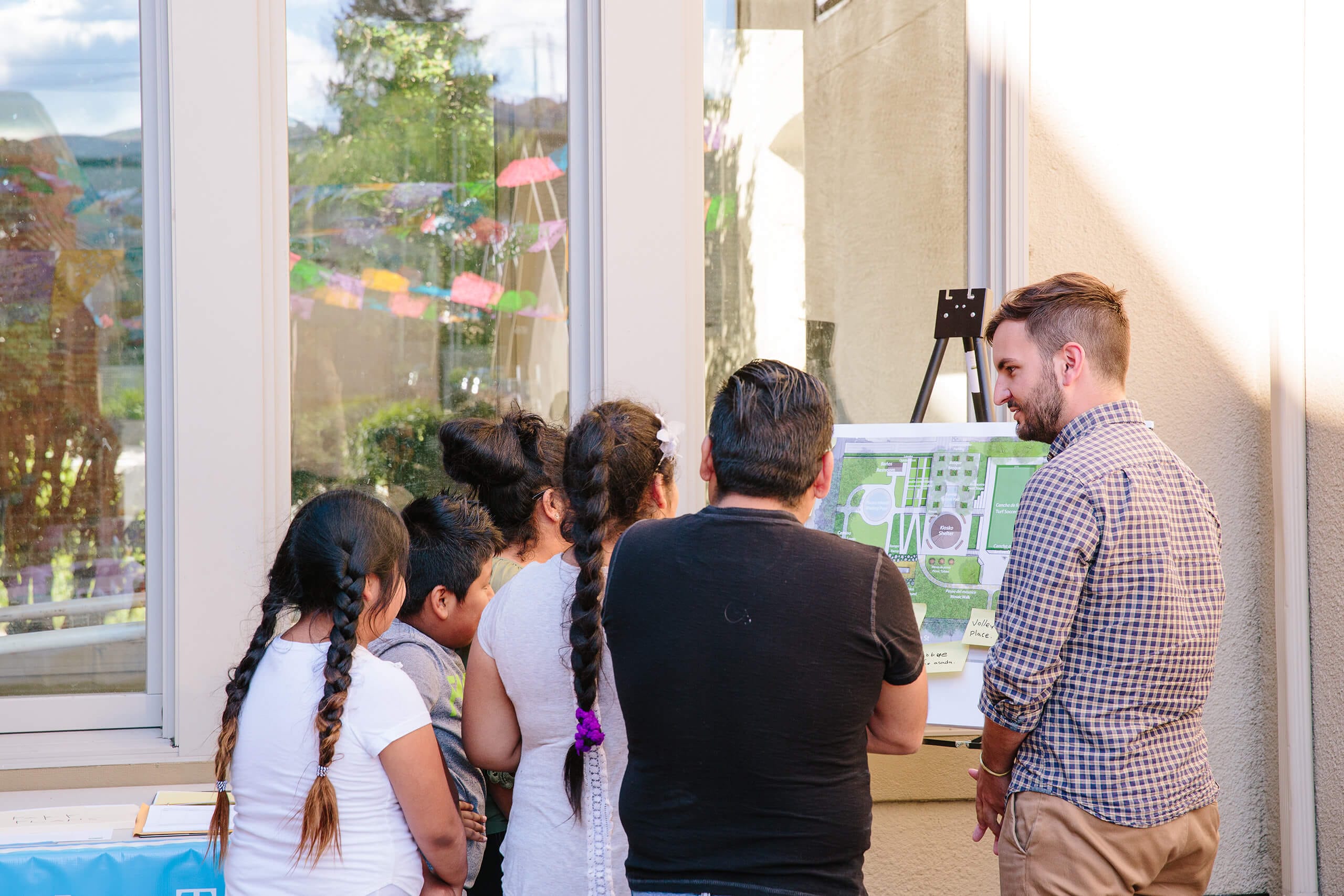
A thousand miles to the south—and what can feel like worlds away—sit the densely populated neighborhoods of South Los Angeles. Here, just a short drive from downtown L.A., cars race by on wide, four-lane roads through an interlocking grid of colorful craftsman bungalows. Front yards tell stories with flowers and plants that grow so tall they lean over metal fences and burst onto cracked city streets.
 Ana Martinez has called this neighborhood home for the last 15 years. Originally from El Salvador, Martinez immigrated first to Anaheim before settling her family in South Los Angeles. She says she loves her neighborhood, but it was much, much cleaner in Anaheim, and she misses that feeling. Here in South Los Angeles, residential blocks are separated by a series of unpaved alleyways. At night, they’re unlit and unwelcoming, and they get muddy and flooded when it rains. People use them as dumping grounds, tossing bags of trash and old furniture. Though they are the closest thing many people have to a backyard, the alleys feel abandoned.
Ana Martinez has called this neighborhood home for the last 15 years. Originally from El Salvador, Martinez immigrated first to Anaheim before settling her family in South Los Angeles. She says she loves her neighborhood, but it was much, much cleaner in Anaheim, and she misses that feeling. Here in South Los Angeles, residential blocks are separated by a series of unpaved alleyways. At night, they’re unlit and unwelcoming, and they get muddy and flooded when it rains. People use them as dumping grounds, tossing bags of trash and old furniture. Though they are the closest thing many people have to a backyard, the alleys feel abandoned.
So when Martinez learned that Trust for Public Land was organizing a group of neighborhood volunteers to convert the alleys into public greenways, she jumped at the chance to help. For the last five years, she’s volunteered with the Equipo Verde—or Green Team. Group members—mostly local moms and grandmas—arm themselves with work gloves, masks, trash bags, brooms, rakes, and shovels. “I’m not afraid of picking weeds, rocks, or trash,” says Martinez. “I’m here to clean.” Over time, the Equipo Verde has converted the junk-filled alleys into bright, shared spaces that their neighbors enjoy and feel safe walking through.
Martinez now considers it her calling to urge her neighbors to advocate for South Los Angeles—to push city officials to fix potholes, collect trash, and remove graffiti. “I start every conversation with my neighbors with the same line—‘Excuse me, did you call 311 already?’” she laughs.
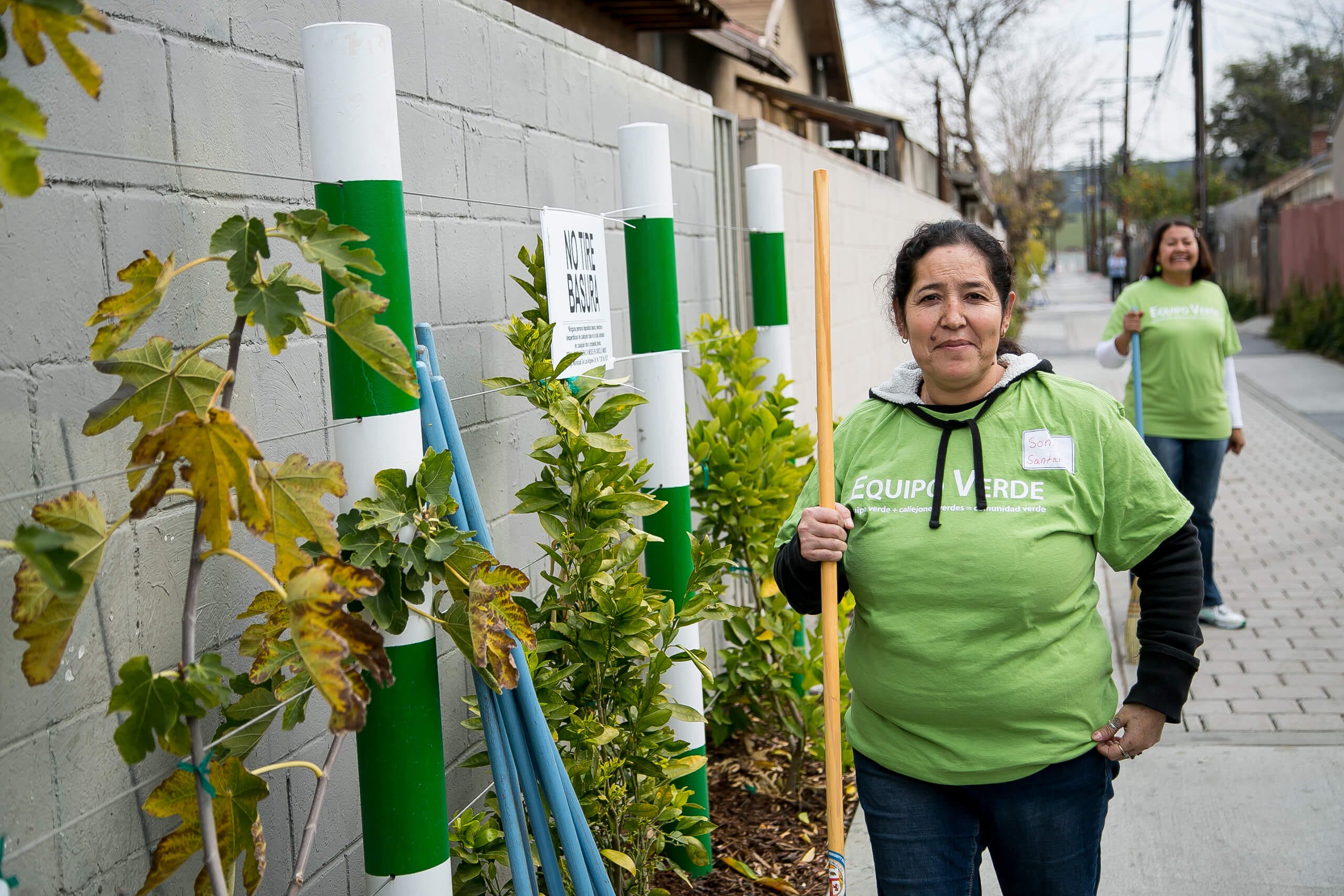
As the Equipo Verde has grown and gelled, it’s become a vital source for all kinds of information and support. Green Team members point each other and their neighbors to affordable healthcare options, assistance programs, and other useful resources they learn about through their work with local leadership. They’ve grown so effective at recruiting their neighbors to turn up for almost any type of project, school administrators now rely on them as community ambassadors.
“They activate the parents, but they can even get people who don’t have kids to come to school meetings,” says Hugo Carlos, principal of the Dr. Maya Angelou Community High School. “[Having] productive problem-solving citizens activate their own political will to ensure that we are moving forward [is a] benefit to everyone.”
More and more, the Equipo Verde is finding ways to flex its newfound political muscle. The city council member for District 9 invited an Equipo Verde leader named Sofía Girón to give a speech at a groundbreaking ceremony. They’ve traveled to the State Capitol in Sacramento to speak with lawmakers about parks and open space, and addressed county leaders in support of a water conservation measure.
“I’m not afraid of speaking out. I feel like I have more strength and courage. Now it’s fun. I can speak to anyone about our work.”
– Ana Martinez, South Los Angeles resident
And this spring, they testified before the Los Angeles County Supervisors in support of directing more funding from a county-wide parks bill to South Los Angeles, where far too few people have access to a park close to home. After Equipo Verde members made their case, the supervisors voted unanimously to approve the funding.
As she’s worked to bring change to her neighborhood, Martinez says she’s noticed a change in herself. Before joining Equipo Verde, she only attended meetings about her kids’ education. Now, she says, “I’m not afraid of speaking out. I feel like I have more strength and courage. Now it’s fun. I can speak to anyone about our work.”
Back in South Wenatchee, Kiwanis Methow Park is nearly unrecognizable from its former incarnation. This fall, it reopens with a new turf field, a bathroom, an upgraded playground, more seating, and more shade. The revitalized park is centered on a new kiosko—a pavilion designed for performances and celebrations, common in town squares in Mexico. At Kiwanis Methow Park, the kiosko will host the town’s Mexican folk dance troupe as well as Wenatchee High School’s award-winning mariachi band.
“The kiosko will be a place where the community gathers, a central point for our pachangas (parties),” says Bendito. In a community with so many memories of disappointment, Bendito says, this scale of transformation means a lot.
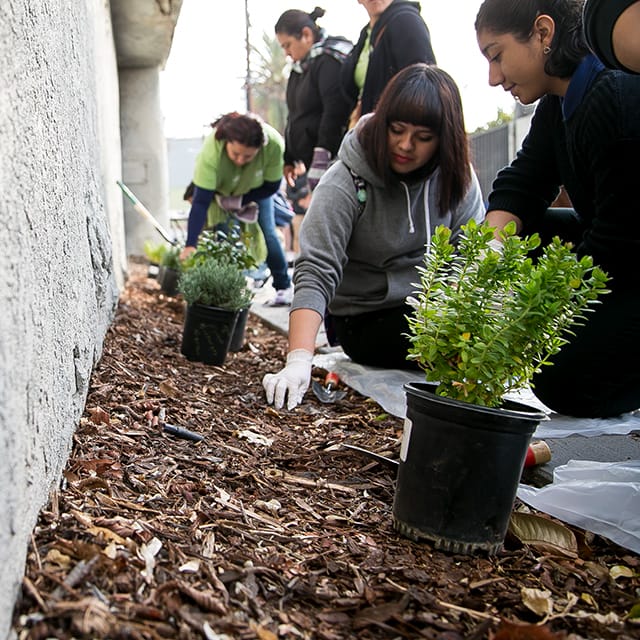
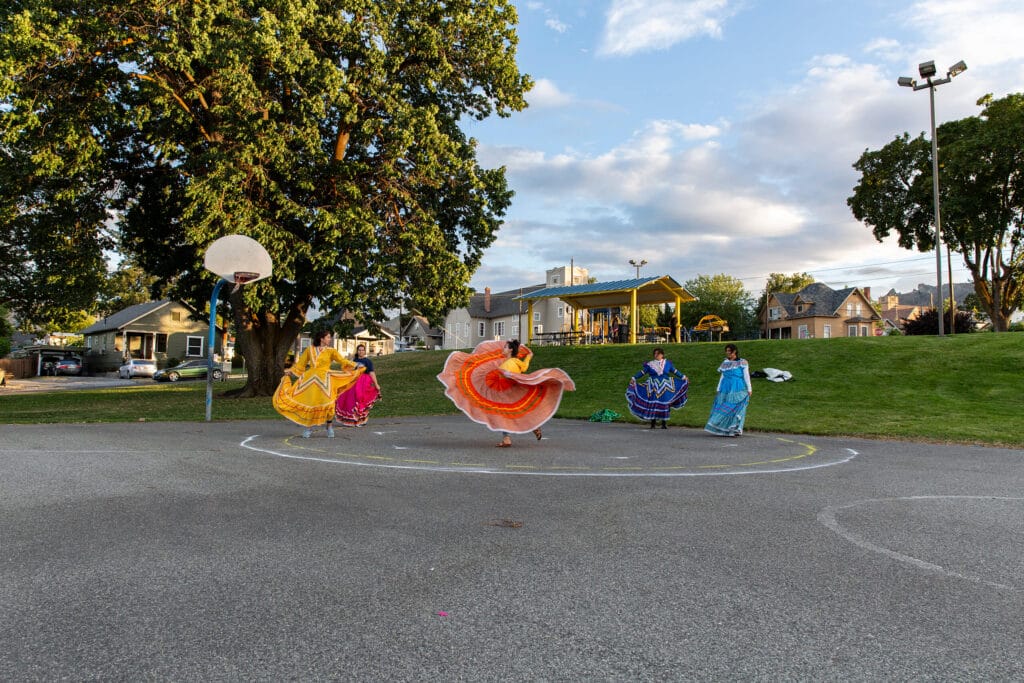
“Parque Padrinos is not just about the park. They’ve developed a space where your identity is respected and elevated so you can build community,” says Oskar Zambrano. Zambrano works with the Latino Community Fund of Washington, an organization that encourages civic engagement and equal representation. Wenatchee has historically had low Latino voter turnout, and Latinos are underrepresented in government office. So when it was time to get out the vote for the 2018 midterm elections, Zambrano called the Parque Pardrinos to help.
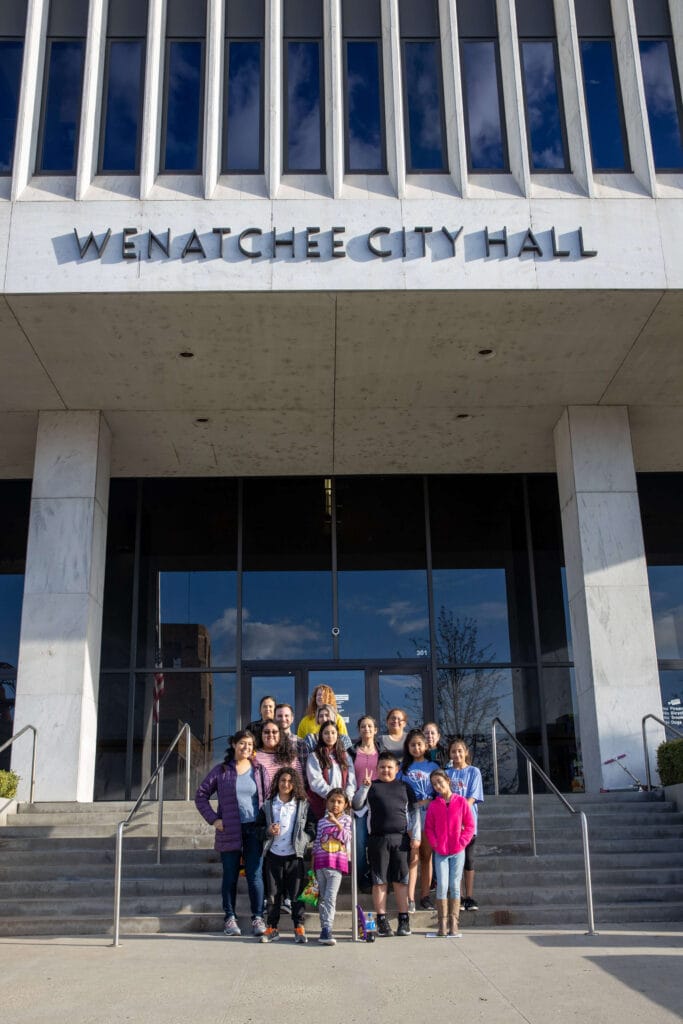 In the days before voters headed to the polls, Padrinos knocked on 3,500 doors and made 4,200 phone calls. When ballots were tallied, Latino voter turnout was three times what it had been in the two most recent midterms.
In the days before voters headed to the polls, Padrinos knocked on 3,500 doors and made 4,200 phone calls. When ballots were tallied, Latino voter turnout was three times what it had been in the two most recent midterms.
“When I heard those numbers, I couldn’t believe it,” says Zepeda-Sosa. “I realized we had the power to uplift candidates who care about our concerns and change how resources are distributed in our city.”
“We see this time and time again: in every community we work with around the country, parks and green space can be a spark that leads to structural change for underrepresented communities,” says Dayana Molina, a Trust for Public Land community organizer who works alongside the Equipo Verde in Los Angeles. The seemingly simple act of bringing people together to advocate for a common goal builds power—and that power can resonate, creating effects that go way past the boundaries of a particular park, she says.
Molina and Simmons hatched a plan. “We wondered what would happen if we brought these two groups together,” says Cary Simmons, a Trust for Public Land project manager in Wenatchee. “How might they learn and build off of each other’s success?”
Acting on this premise, Simmons and Molina engineered a meeting of the minds: last fall, the Padrinos ventured to Los Angeles to meet the Equipo Verde. Together, the groups strolled through alleys and visited Trust for Public Land parks throughout the city. They shared presentations on lessons learned, innovative approaches to recruiting members, event planning and organizing, and building strong relationships with city officials.
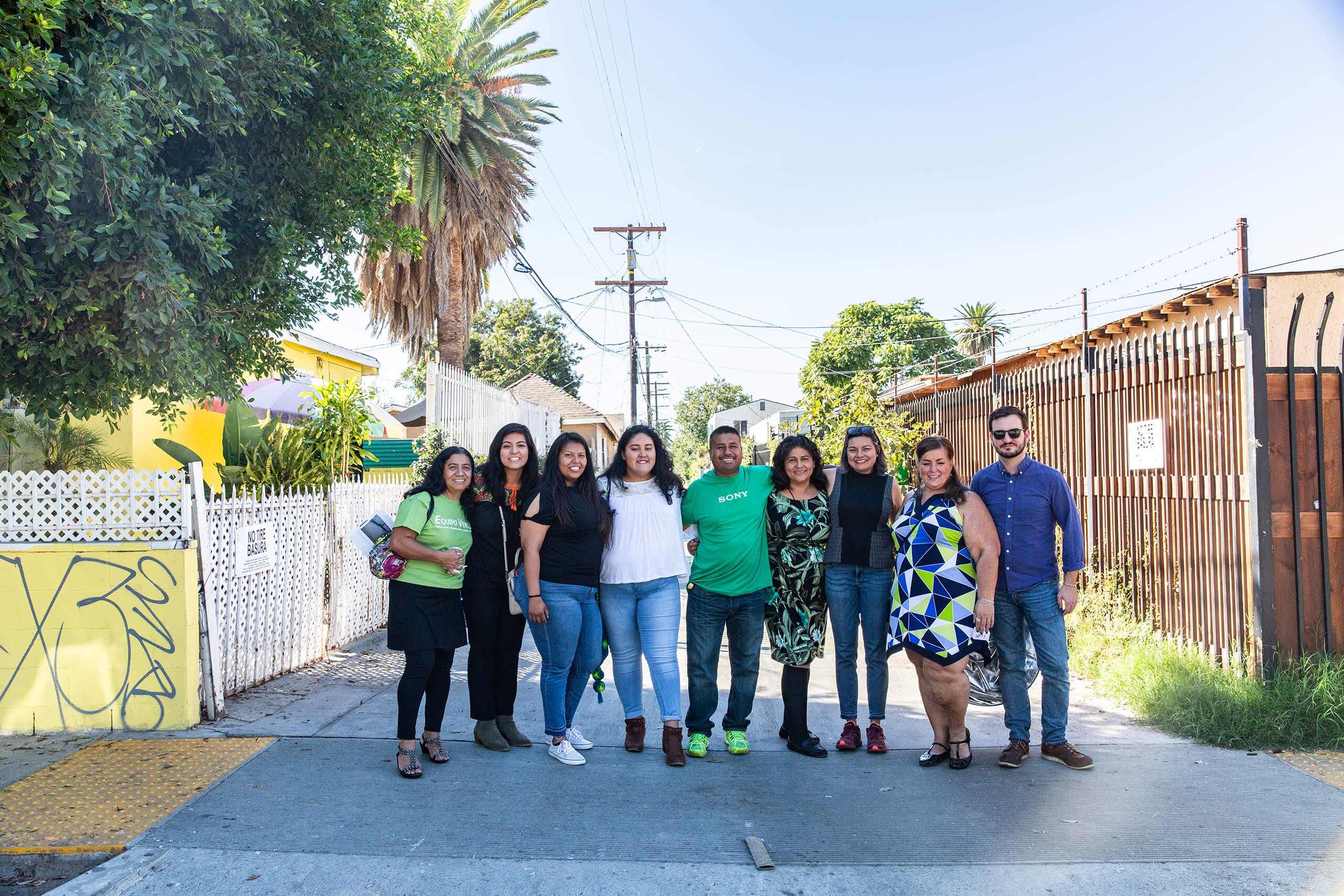
It was the first time both groups had talked about their work outside their own communities without need for an interpreter. “We showed that we are experts in this work who can offer guidance to peers in our own language,” says Parque Padrinos member Lizbeth Rivera-Estrada.
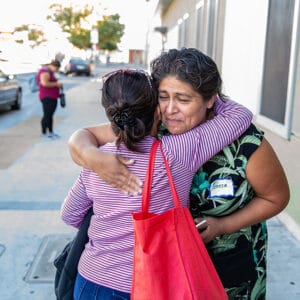
At a gathering at a community center, the energy was familial. Toddlers sat on laps and children busied themselves about the room. As one volunteer stood up to address the group, she handed her baby to the next. The idea of padrinos was a natural fit to the Equipo Verde members. “When we explain our goals and make familiar connections—like the padrinos—people want to join us,” says Martinez.
For Bendito, the visit to Los Angeles reminded her of her own childhood. “I remember myself in community meetings as a child,” Bendito says, recalling her mom’s work to keep their home on the Columbia River. “It makes a difference to be involved as a young person.” Now Bendito is the one organizing the meetings, making space for kids and teenagers to get involved.
Bendito shared the story of 13-year-old Roberto Mancilla, who had started a group of “padrinitos”—for younger volunteers. He organized a piñata-making workshop at the park and has raised $50 in donations toward its renovation. Later, he joined the Parque Padrinos on a visit to the capital to meet with state representatives.
“Kids need to see and experience the fruits of their labor and organizing,” says Bendito. “Now that I see the Padrinos leading on our own, I’m confident we have begun a movement that will impact lives wherever our people take this experience. I’ve learned that you don’t have a movement unless it can move without you.”
Read more about Trust for Public Land’s work to build community power through park and green space engagement in our On Common Ground green paper.
Need more inspiration? Read our deep-dive profiles of Parque Padrinos founder Teresa Bendito and Equipo Verde member Sonia Rodriguez, both named TPL Community Impact Heroes, and ask what you can do for your own community.
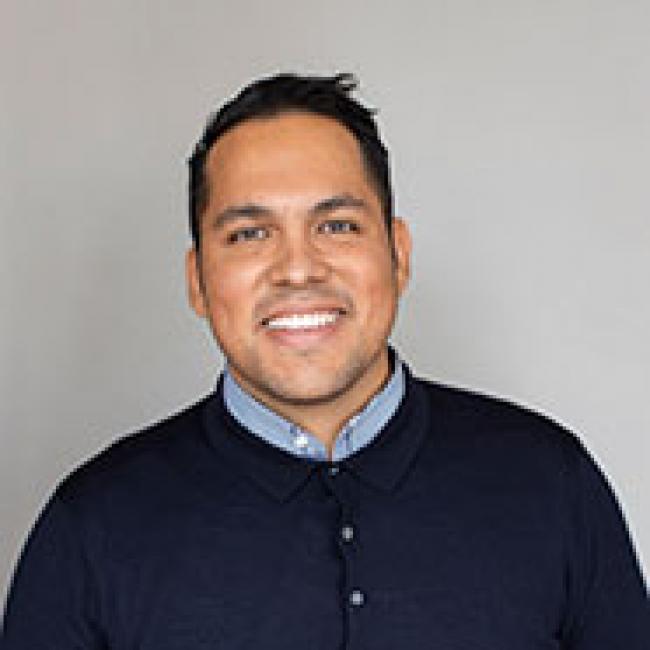
Jorge Rivas is a firm believer in the power of storytelling and visual communications to inform and move people into action. He has been recognized with a GLAAD Media Award and medals from the National Association of Hispanic Journalists for his investigative work focused on issues impacting Latinos in the U.S.

Donate to become a member, and you’ll receive a subscription to Land&People magazine, our biannual publication featuring exclusive, inspiring stories about our work connecting everyone to the outdoors.

